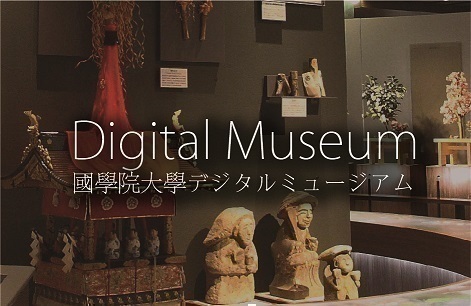- トップ
- Encyclopedia of Shinto
- Han honjisuijakusetsu (Anti-honjisuijaku thought)
Encyclopedia of Shinto
| Main Menu: | |
| Links: |
詳細表示 (Complete Article)
| カテゴリー1: | 7. Concepts and Doctrines |
|---|---|
| カテゴリー2: | Doctrines and Theories |
| Title | Han honjisuijakusetsu (Anti-honjisuijaku thought) |
| Text | This term covers a range of theories that were created during the medieval period which argue for the superiority of indigenous kami over Buddhist deities. These theories were voiced in opposition to the Buddhist honji suijaku theory which posited that the kami were merely local manifestations of the original Buddhist deities. One example of this can be seen in Mujū's Shasekishū. In it, it is argued that just as blue emerges before indigo, and blue precedes indigo, the kami emerged before the Buddhist deities, and that belief in them is therefore purer than belief in Buddhist deities. Another example is the thought of Jihen, the son of Urabe Kaneaki and the elder brother of Kenkō, the author of Tsurezuregusa. His ideas were a forerunner to Yoshida Kanetomo's root/trunk-branch/leaf-flower/fruit theory, which is seen as representative of the arguments against the Buddhist notion of honji suijaku. In Jihen's Kuji hongi gengi, the first fascicle argues that in the beginning, there were kami in Japan, but that they later yielded to Buddhism. With this, the buddhas assumed the dominant position, but Jihen went on to argue that a degenerate age followed this period in which monks and nuns fell into depravity and brought the country to ruin. Therefore, Buddhism had already lost its raison d'etre. Jihen concluded by stating that before long a world centered around the kami would appear once again. Moreover, according to the fifth fascicle of the same work, Japan was likened to the seed, Tang China to the branch/leaf and India was likened to the flower/fruit. Just as flowers fall and return to the roots, Japan was seen as the origin and the kami were argued to be the underlying foundation. Following this reasoning, the Buddhist deities were explained as manifestations of the kami. Since this notion was directly opposed to the Buddhist theories, it is referred to as the han honji suijaku setsu (anti-honji suijaku theory). Yoshida Kanetomo, who was influenced by these views, stated in his Yuiitsu shintō myōbō yōshū that Japan formed the root and trunk, that China manifested the branches/leaves, and that India opened the flower/fruit. Thus, Buddhism was the flower/fruit of all teachings, Confucianism was their branch/leaf, and Shinto their root. Kanetomo further argued that Shōtoku Taishi had stated that Confucianism and Buddhism had developed out of Shinto. He was able to make this argument by attributing the authorship of Sendai kuji hongi, in which this line of thinking can be found, to Shōtoku Taishi. Based on the argument made in the aforementioned Kuji hongi gengi, Kanetomo reconstructed the relationship between Shinto, Confucianism, and Buddhism grounded in the notion of the autonomous nature of Shinto. With this, he sought to argue that the transmission of Confucianism and Buddhism to the east signified a return of these two systems of thought to their original roots. When comparing Jihen with Kanetomo, Jihen fundamentally argued for the unity of kami and buddhas and did not clearly assert Shinto's superiority like Kanetomo did. As a Tendai monk, Jihen tried to overcome the idea which had been propagated by Sannō Shintō that the kami of Hiyoshi (the tutelary kami of Mt. Hiei, an important center of the Tendai sect) was merely a manifestation of Shakyamuni. His theories were a product of his intellectual anguish concerning this issue. In his effort to overcome the views of Sannō Shintō, he learned Ise Shintō from Watarai Ieyuki and developed the idea that Sannō (the Hiyoshi kami), Shakyamuni, and Ise were all identical. Since he still envisioned the relationship between Shakyamuni and Sannō based on the concept of honji suijaku, his ideas do not represent a complete break with the past. It is the achievement of Yoshida Kanetomo to have developed these ideas into a theory that was directly opposed to the notion of honji suijaku and to have created Yoshida Shintō. It can be said that Kanetomo was a pivotal figure for the establishment and maturation of anti-honji suijaku thought. Finally, there is the need to address the kami-centric thought of Ise Shintō. Kami-centric thought from Ise not only influenced Jihen's Kuji hongi gengi, but also Kitabatake Chikafusa's Gengenshū and Jinnō shōtōki. However, for Jihen, who studied at Mt. Hiei, the honji suijaku relationship of Shinto and Buddhism was an issue that he had to overcome. But, since Ise Shintō and Chikafusa's thought were focused on different issues, neither confronted the problem directly. — Shirayama Yoshitarō |




